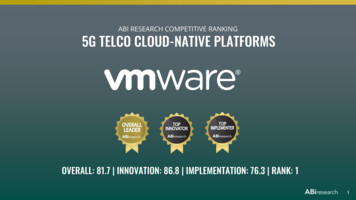
Transcription
ABI RESEARCH COMPETITIVE RANKING5G TELCO CLOUD-NATIVE PLATFORMSOVERALL: 81.7 INNOVATION: 86.8 IMPLEMENTATION: 76.3 RANK: 11
OVERALL: 81.7 INNOVATION: 86.8 IMPLEMENTATION: 76.3 RANK: re9080HuaweiAWS60Wind RiverAzureRed 30201005G TELCO CLOUD-NATIVE PLATFORMS102030405060IMPLEMENTATION7080901002
INNOVATIONINNOVATIONSCORE: 86.8VMware is a leading provider of multi-cloud services for apps, enabling digital innovation with telco control. Based inPalo Alto, California, VMware offers a broad portfolio of services and software spanning virtualization, networking,storage, cloud-native platforms, and security across multiple industries. For the telecommunications industry, it hasworked with more than 140 CSPs in deploying NFVI and cloud-native networks. It offers a cloud-native platform calledVMware Telco Cloud Platform for 5G networks, which supports more than 220 third-party VNFs/CNFs, including NFsfrom Nokia, Cisco, Ericsson, and Metaswitch. Recently, VMware Telco Cloud Platform was used in a 5G deployment withDISH, deploying multi-vendor NFs on top of a consistent horizontal platform, with the ability to dynamically move andscale workloads in the cloud. Telia has also selected VMware Telco Cloud Platform as the common network horizontaldigital platform on top of which 4G and 5G CNFs—both virtualized and containerized—will run.VMware Telco Cloud Platform is a hybrid IaaS and CaaS platform that can run both VNFs and CNFs from multiplevendors. VMware offers an interoperability certification program, VMware Ready for Telco Cloud, that enables CSPs toquickly validate multi-vendor VNFs and CNFs on VMware Telco Cloud Platform with a dedicated VMware team orthrough a self-certification process for a faster time-to-market. These certifications help ensure that VNFs/CNFs caninteroperate at the core infrastructure layer of VMware Telco Cloud Platform, as well at the orchestration level.Furthermore, VMware vSphere Enterprise Plus, which is the cloud computing virtualization platform that is part ofVMware Telco Cloud Platform, offers the abstraction and management layer that helps enable a multi-vendorecosystem. VMware Telco Cloud Platform also supports a variety of Operating Systems (OSs), including CentOS, Ubuntu,Amazon Linux, Red Hat Enterprise Linux, and Photon OS. VMware thus scores a perfect 10 for their ability to orchestrateand support multi-vendor NFs.In terms of open source, VMware is the number two contributor to Kubernetes and offers native Kubernetes accessthrough command-line tools like kubectl. VMware also contributes to other open-source communities, such as ONAP,OPNFV, O-RAN, and OSM. VMware Telco Cloud Platform’s CaaS engine, Tanzu, is an upstream Kubernetes project, anduses open-source projects, such as Harbor, Cluster API, Velero, and Sonobuoy, to deliver additional capabilities. VMwarealso provides a fully open-stack-compliant VIM, VMware Integrated OpenStack, as well as VMware Cloud Director, with amulti-tenant VIM.Regarding container security, virtualization provided by VMware vSphere offers inherent security in the hypervisor,which separates the VM’s OS from the underlying hardware’s OS and isolates tenants. (Note that this level ofsegmentation cannot be achieved with bare metal deployments at the moment without using virtualization technology,such as KubeVirt.) Pod-level micro segmentation is also enabled through VMware NSX, which is VMware Telco CloudPlatform’s networking and security solution. VMware scores very high in terms of container security due to the inherentsecurity brought about by vSphere and NSX, which are based on virtualization technology, enabling isolation of tenantsand hypervisor security for containers.5G TELCO CLOUD-NATIVE PLATFORMS3
INNOVATIONINNOVATIONSCORE: 86.8VMware Telco Cloud Platform is purpose-built for the telecommunications industry and offers telco-grade Kubernetesthrough Tanzu, which includes telecommunications-specific enhancements, such as Multus Container Network Interface(CNI), support for DPDK, SR-IOV, and automated cluster provisioning and configuration. VMware also offers a wholesuite of networking capabilities for CSPs, such as: VMware NSX (included in VMware Telco Cloud Platform), which provides Software-Defined Networking (SDN) andnetwork security VMware RIC, which abstracts the complexities inherent to the underlying RAN infrastructure and provides developerAPIs for xApps and rApps to program the open RAN VMware Software-Defined Wide Area Network (SD-WAN), which delivers secure, reliable, and efficient access for usersfrom any location to any cloud application VMware Telco Cloud Automation for orchestration VMware Telco Cloud Operations for service assuranceVMware Telco Cloud Platform also provides additional telco-specific features, such as a low latency data plane throughCentral Processing Unit (CPU) pinning, fine-grained Non-Uniform Memory Access (NUMA) placement, and vertical NUMAalignment. Carrier-grade reliability, High Availability (HA), and resiliency are also ensured through VMware ESXi, a type-1hypervisor. Rollbacks and upgrades are also possible without the need to take assets offline and reroute traffic.Additional O&M solutions in the VMware portfolio include VMware vRealize, which provides carrier-grade cloudautomation.For container orchestration, VMware Telco Cloud Platform uses late binding, which automates workload instantiationand configures cloud environments based on VNF/CNF requirements. With late binding, VNF/CNF customization time isreduced by 75% compared to manual configuration methods. Late binding also optimizes performance by helping avoidover- and under-provisioning of infrastructure resources. VMware Telco Cloud Automation provides automaticdeployment of the full telco stack with infrastructure provisioning, dynamic placement of workloads, and LCM ofVNFs/CNFs and services. If a workload is not performing well, VMware Telco Cloud Automation applies the rightoperational procedure (e.g., healing, termination, or custom operations). VMware also provides multi-clustermanagement and orchestration through VMware Telco Cloud Automation and VMware Tanzu Kubernetes Grid as afundamental feature included in VMware Telco Cloud Platform. VMware’s differentiating factor here is late binding,reducing NF customization time and, thus, overall time-to-market.Regarding AI and ML capabilities for network operations, VMware vSphere Bitfusion virtualizes Graphics ProcessingUnits (GPUs) to support AI and ML, and VMware vRealize AI Cloud uses ML to optimize VMware vSAN performance atthe infrastructure layer. VMware Telco Cloud Operations also uses ML and analytics for monitoring, businessintelligence, and proactive assurance.5G TELCO CLOUD-NATIVE PLATFORMS4
IMPLEMENTATIONIMPLEMENTATIONSCORE: 76.3VMware Telco Cloud Platform enables multi-cloud capabilities from the core, edge, and RAN to the public cloud, with thevirtualization layer in VMware Telco Cloud Infrastructure enabling the building and management of the same workloadsacross public, private, and edge clouds with consistent management tools and orchestration. With VMware Telco CloudAutomation and late binding, workloads can be placed across multiple clouds and a cloud-smart approach easesworkload instantiation and increases mobility from the network core to edge. VMware has recently introduced VMwareTelco Cloud Platform – Public Cloud, which will be generally available in 4Q 2022, but can already support CSPsdeploying their NFs on VMware Cloud on AWS environments.VMware Telco Cloud Platform – RAN gives CSPs a platform to modernize their RAN architecture by enabling multivendor virtualized Distributed Units (DUs) and virtualized Central Units (CUs) to run on top of a common horizontalinfrastructure with consistent operations and automation, providing a cloud-native platform for RAN. VMware has alsopartnered with Intel to optimize vRAN infrastructure. VMware has partnerships with Altiostar and Mavenir to certifytheir RAN solution on VMware Telco Cloud Platform – RAN. VMware’s telco domain range thus extends from the core toRAN and edge, and its VMware Telco Cloud Platform – RA gives it an edge over most other cloud infrastructure providersfor the RAN domain.In terms of cloud-native capabilities, VMware supports CI/CD with VMware Telco Cloud Automation SDK and API-basedintegrations to major third-party CI/CD toolchains, such as Jenkins and GitLab. Container orchestration and LCM is donethrough Tanzu Standard for Telco, which provisions and manages the life cycle of Tanzu Kubernetes clusters. Both VNFsand CNFs run in VMs as part of VMware’s value proposition, which provides operational flexibilities and innate securitythrough the separation of the Guest and Host OS. This flexibility gives CSPs a consistent singular horizontal platformacross the core, edge, RAN, and public cloud to run legacy VNFs and future CNFs as CSPs transition into a cloud-nativeenvironment and way of working.VMware Telco Cloud Platform consists of three main layers: a consistent horizontal infrastructure layer responsible forhosting multi-vendor VNFs, a CaaS layer with Tanzu Standard for Telco responsible for hosting and operating multivendor CNFs, and a cloud-smart automation layer with VMware Telco Cloud Automation responsible for providing acentralized management plane, enabling service, NF, CaaS, and infrastructure automated operations across domainsand clouds. VMware Telco Cloud Operations, which offers real-time assurance with monitoring and root-cause analysis,can be added to the VMware Telco Cloud Platform stack. Furthermore, Tanzu itself is modular, and CSPs can choosedifferent components for logging, monitoring, backup, observability, registry, etc.5G TELCO CLOUD-NATIVE PLATFORMS5
CRITERIA AND METHODOLOGY
VENDOR MATRIXMethodology: After individual scores are established for innovation and implementation, an overall companyscore is established using the Root Mean Square (RMS) method:The resulting overall scores are then ranked and used for percentile comparisons.The RMS method, in comparison with a straight summation or average of individual innovation and implementationvalues, rewards companies for standout performances.For example, using this method, a company with an innovation score of nine and an implementation score of onewould score considerably higher than a company with a score of five in both areas, despite the mean score being thesame. ABI Research believes that this is appropriate as the goal of these matrices is to highlight those companiesthat stand out from the others.RANKING CRITERIALeader: A company that receives a score of 75 or above for their overall rankingMainstream: A company that receives scores between 60 and 75 for their overall rankingFollower: A company that receives a score of 60 or below for their overall rankingInnovation Leader: A company that receives a score of 75 or above for their innovation ranking.Implementation Leader: A company that receives a score of 75 or above for their implementation ranking.7
INNOVATION CRITERIAMulti-Vendor Network Functions Orchestration: Companies that enable integration and orchestrationof third-party Virtual Network Functions (VNFs)/Cloud-Native Network Functions (CNFs) throughcertification programs, open interfaces, and multi-vendor orchestrators. As CSPs increasingly wantchoice and flexibility in building a “best-of-breed” telco stack, a multi-vendor platform becomes anincreasingly attractive option. VNFs are included in this assessment as 5G CNF design and deploymenthas not yet seen mass deployment for many CSPs. This criterion takes up 25% of the innovationscoring.Telco Grade Supporting Features: 5G is a performance technology and telco cloud-native platforms willhave to provide features such as Single Root I/O Virtualization (SR-IOV), Data Plane Development Kit(DPDK), Non-Uniform Memory Access (NUMA), and dual stack IPv4 and IPv6 capabilities, among manyothers. This is also a high-priority criterion and takes up 25% of the innovation score.Container Orchestration and Management: 5G Service-Based Architecture (SBA) will require theorchestration and management of containers to deliver cloud-native capabilities. Platforms areevaluated on their ability to auto-scale clusters and enable Life Cycle Management (LCM) and Zero-TouchProvisioning (ZTP) of containers. This criterion is also high priority and takes up 20% of theinnovation score.Artificial Intelligence (AI) and Machine Learning (ML) Capabilities for Network Operations: AI andML capabilities for network operations is another important criterion that enables automation, ensuresthat Service-Level Agreements (SLAs) are kept, and improves customer experience. As microservicescome into play for 5G, automation is key to ensuring the efficiency of the network. Companies areevaluated based on the degree of AI/ML used for troubleshooting, predictive network maintenance, andnetwork analytics. AI/ML capabilities for 5G cloud-native platforms is a rapidly developing area, withsome companies being further ahead due to pre-existing AI/ML capabilities, while others are working toimplement it. This criterion gets a 15% for its innovation scoring.8
INNOVATION CRITERIAOpen Standards and Open Source: Open standards and open source enables portability acrossmultiple clouds and helps avoid software or cloud “lock-ins.” It also supports innovation and allows CSPsand app developers to improve their offerings based on changing demand and market trends, asopposed to relying on a proprietary solution where it is up to the platform provider to provide updates.Companies that support interoperability with third-party components through open standards andenable innovation through the utilization of open-source projects will rank highly on this criterion. Thiscriterion takes a lower priority at 10% of the innovation score.Container Security: While Kubernetes and cloud Operating Systems (OSs) themselves have built-insecurity features, container security is still an important feature, albeit one of lower priority in the scopeof this CA. This criterion is measured by implementation of security features, effectiveness of ensuringtenant isolation, and measures to ensure rollbacks. It gets a 5% cut of the innovation score.9
IMPLEMENTATION CRITERIACloud-Native Capabilities: This is a key criterion for CSPs, as moving forward, 5G will require CSPs to designservices and work in a cloud-native way. Platform providers are evaluated on their support for cloud-nativecapabilities, such as CI/CD pipelines, DevOps processes, microservices, service mesh, container orchestration,cluster management, etc. This criterion has the highest weighting of 30% for implementation.Extent of Modularity: Beyond incorporating multi-vendor Network Functions (NFs), CSPs are also looking forservice continuity and protection of existing investments in the form of modularity for cloud-nativeplatforms. Third-party components should be able to interoperate with these platforms, and CSPs arelooking to avoid platform “lock-ins” as well. The ability to swap out components, the level of interoperabilitywith CSPs’ existing assets and components, and the extent of ecosystem support are evaluated for thiscriterion. This is the second most prioritized criterion, with a weighting of 25% for implementation.Multi Cloud and Hybrid Cloud Support: The introduction of hyperscalers into the telco domain is anemerging trend that will drive innovation and transform the way CSPs deploy their networks. Being able to gomulti cloud or hybrid cloud is an increasing area of interest for CSPs, and platform providers are looking toincrease their support to manage cloud-native workloads across multi-cloud deployments and enableadvanced capabilities, such as “burst-to-cloud” with hybrid cloud deployments. Becoming cloud agnostic isalso an increasingly important feature for CSPs to deploy their Information Technology (IT) and telcoworkloads. This is an emerging trend for telcos that will increase in importance in the long term and gets a20% scoring for implementation.Telco Domain Range: Companies are evaluated based on the ease and extent of deploying the platformacross the telco domains (i.e., core, edge, far edge, and RAN). CSPs ideally want to have a single unifiedplatform that cuts across all telco domains, but the market is very heterogenous in this regard; therefore, thisgets a lower scoring of 15% for implementation.Deployment Model: This criterion refers to whether the platform supports bare metal deployments andVirtual Machine (VM) deployments. As CSPs transition from VMs on NFVI to containers on bare metal, theplatform will need to provide CSPs with an evolutionary path that does not alienate brownfield deploymentsof VNFs on NFVI. This has an implementation weighting of 10%.10
February 2022 2022 ABI ResearchNew York, NY 11771 USATel: 1 516-624-2500www.abiresearch.comABI Research is a global technology intelligence firm delivering actionable research and strategic guidance to technology leaders, innovators, and decision makers around the world.Our research focuses on the transformative technologies that are dramatically reshaping industries, economies, and workforces today. ABI Research’s global team of analysts publishgroundbreaking studies often years ahead of other technology advisory firms, empowering our clients to stay ahead of their markets and their competitors. 1.516.624.2500 in the Americas, 44.203.326.0140 in Europe, 65.6592.0290 in Asia-Pacific or visit www.abiresearch.com.ALL RIGHTS RESERVED. No part of this document may be reproduced, recorded, photocopied, entered into a spreadsheet or information storage and/or retrieval system of any kindby any means, electronic, mechanical, or otherwise without the expressed written permission of the publisher.Exceptions: Government data and other data obtained from public sources found in this report are not protected by copyright or intellectual property claims. The owners of this datamay or may not be so noted where this data appears.Electronic intellectual property licenses are available for site use. Please call ABI Research to find out about a site license.
partnered with Intel to optimize vRAN infrastructure. VMware has partnerships with Altiostar and Mavenir to certify their RAN solution on VMware TelcoCloud Platform - RAN. VMware'stelco domain range thus extends from the core to RAN and edge, and its VMwareTelcoCloud Platform - RA gives it an edge over most other cloud infrastructure .

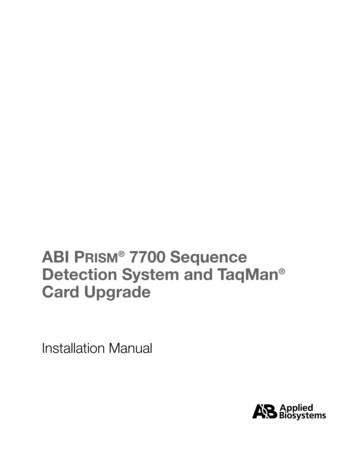

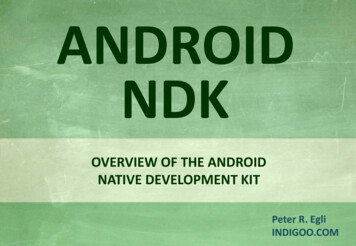
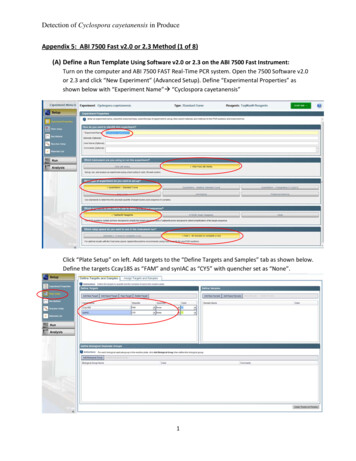
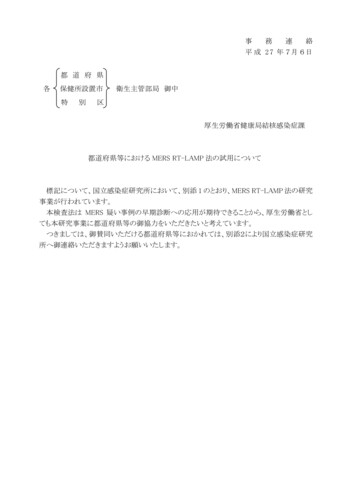

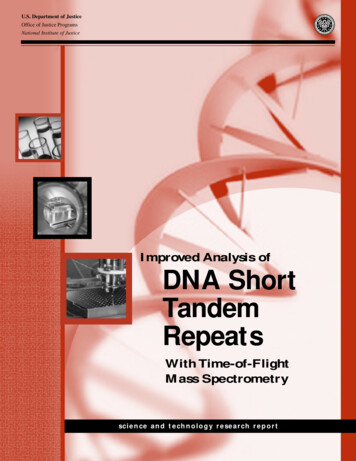
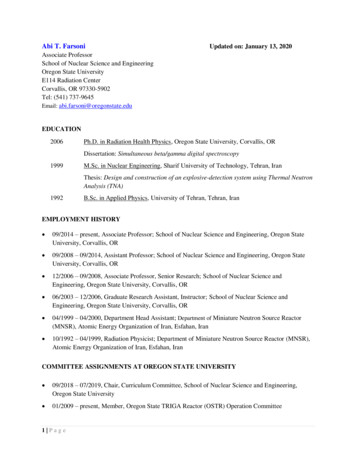

![05[2] Strategy competitors, competitive rivalry .](/img/2/052-strategy-competitors-competitive-rivalry-competitive-behavior-and-competitive-dynamics.jpg)
